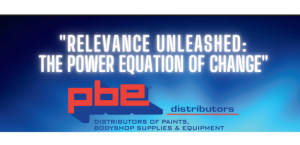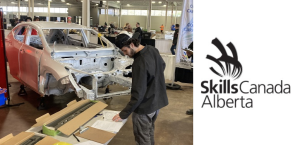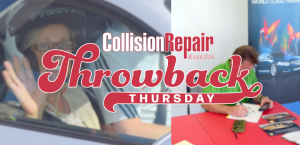By Jordan Arsenault
Toronto, Ontario — April 23, 2019 — For the past seven years, Dave Flockhart has served as the chief operating officer of BETAG Innovation. During his tenure, Flockhart has played a key role in BETAG’s push to enshrine the importance of training to the business’ collision facility customers, and the industry at large. Recently, Collision Repair caught up with BETAG Innovation chief operating officer Dave Flockhart to discuss the importance of training in the industry.
Collision Repair: Why is training so vital to the collision repair industry?
Dave Flockhart: After a collision, it’s critical that the vehicles involved are repaired in the correct manner in accordance with the procedures that the OEM specifies. Training is so important because of the rate at which the new technologies and materials used in car production continue to evolve. Change is happening at a rapid pace, so it’s vital that the knowledge and skills of estimators and technicians keep pace. The only way to do that is through continuous development and training.
CR: What has been the impact of training on collision repair?
DF: The top priority is safe and proper repairs. But there are also customer satisfaction, productivity and efficiency benefits.
The new technologies and materials used to build cars have created a need to develop and learn new repair techniques. This has taken the collision repair industry time to embrace but we are now seeing the industry as a whole recognizing the importance of developing the knowledge and skills of their estimators and technicians to do that.
To support this, it’s important to continue to implement skills-based training, rather than relying solely on theoretical training.
By way of example, we’ve developed a series of hands-on estimator training programs with a couple of OEMs over the past few years, which have focused on vehicle structure, damage analysis and identifying the most appropriate methods for repair. This has resulted in more accurate estimates, better repair plans, and fewer supplements within their networks.
CR: What are some of the biggest challenges the industry faces when it comes to training?
DF: There is recognition by repairers that estimators and technicians need to continue to develop their knowledge and skills to be able to repair modern vehicles properly. The problem is the time that is required to do that and the associated cost of lost productivity.
We need to innovate to address this. Online learning is part of the answer, but it will never be a substitute for hands-on practical skills-based training.
CR: What advice would you give a bodyshop owner looking to maximize the training of their employees?
DF: There is no question about the need for specific technical training as part of the OEM certification process, but alongside this, there is a huge opportunity for bodyshop owners to increase the productivity of their estimators and technicians through training.
More than 60 percent of work undertaken by repairers is to outer panels and parts. Today’s most successful body shops have recognized this, shaping and training their teams to become extremely proficient in this area.
Focusing on developing technicians’ knowledge and skills to straighten these steel and aluminum panels properly and efficiently, rather than just replacing them, presents owners with an opportunity to create a significant competitive advantage and realize a compelling return on their training investment.
CR: How can training become more effective at moving forward with the times?
DF: There’s no substitute for practical hands-on skills-based training. The reason that most technicians come into this industry is to fix things using their hands. Their default learning style reflects that. Having more hands-on training is, therefore, a critical component going forward.
We also need to take more of an assessment-based approach to training. Not every technician or estimator needs to go through every class. If you’re starting out in your career, then maybe yes, but otherwise it should be more focused on specific needs. Even experienced technicians and estimators need to be trained on new materials and new repair techniques
By assessing the knowledge and skills of an estimator or technician before training it’s possible to identify any gaps and produce a tailored training plan for an individual. This is not only more impactful, but it is also much more cost-effective and minimizes loss of productivity.
We’ve done this very successfully for a Japanese OEM in Europe, enabling their training program to become more targeted and focus on developing the specific knowledge and skill sets needed to look after their customers and repair their vehicles properly, without requiring everyone to take every class.





































